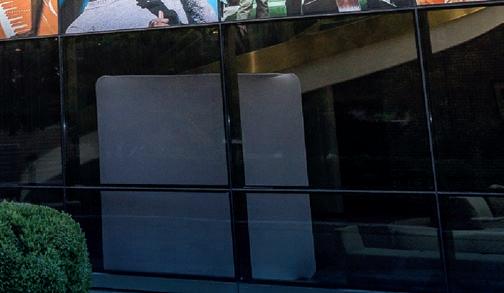HOW TO
SUBSTRATES | BY SCOTT WALTON
Forming a Decision Choosing the right material impacts signage.
Photo: Plaskolite’s OPTIX SG acrylic sheet.
U
nderstanding the trends in plastics related to signage is critical when selecting the right product to enhance your brand. Acrylic, impact-modified acrylic (IMA), and polycarbonate may look identical to an untrained eye but knowing the differences will ensure the right material is chosen. Although these materials do share properties, key differences exist and should be reviewed. Considerations for sign applications are strength, ease of fabrication, aesthetics, and durability. Each sign application has unique requirements. Acrylic, IMA, and polycarbonate are UV enhanced and easy to clean. A sheet’s chemical resistance varies based on type, concentration, and duration of exposure. The location and use of a sign often dictates what chemicals it will be exposed to and which material provides better re-
signshop.com
sistance. Acrylic and IMA have a better chemical resistance to certain substances, and polycarbonate may be resistant to other chemicals. The sheet’s chemical resistance is a factor during routine cleaning. Care must be used when choosing a cleaner for the job, as solvent cleaners can attack plastics. A soft cloth and mild cleaner should be used for the substrates with mild dish soap and water being the best option. Thermoforming sheet material is common in the sign industry. Acrylic, IMA, and polycarbonate are easy to vacuum form using standard forming equipment. Prior to forming, polycarbonate must be dried, while drying is not necessary for acrylic or IMA. Polycarbonate has a shorter forming cycle because its higher softening temperature allows the part to “set up” faster—the formed part can be removed from the tool quicker.
Depending on the formed part design, automated vacuum forming equipment can achieve up to three times the throughput. In addition, IMA has excellent forming capability for difficult molds. While forming should be the main factor influencing material selection, cost should also be considered. Besides the initial cost of the material, additional fees may be incurred through shipping and potential damage of a finished sign while in transit. The sign material choice may influence the packaging design to reduce or prevent shipping damage or breakage. These savings can go right to the bottom line, especially if such damage leads to installation delays or multiple visits. Painting and screen printing have historically been the primary decoration methods. Today screen printing, while still common for large signs, is not typically April 2021
Sign Builder Illustrated
21









